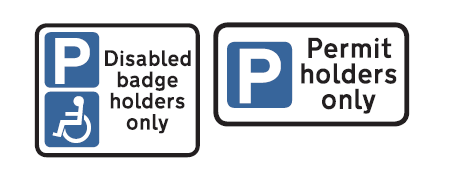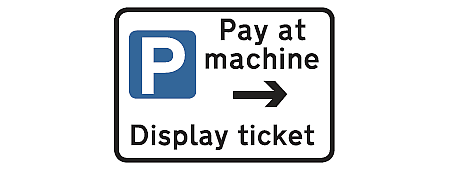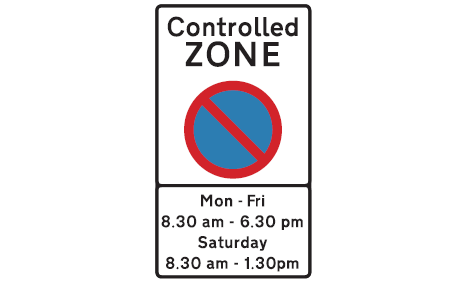London is a thriving commercial and residential area – consequently parking controls are necessary to maintain traffic flow and protect public spaces.
Although there is a shortage of parking spaces in many places, London has an extensive transport network. Using car parks is often preferable to parking on the street as many roads are reserved for resident permit holders only. Car parks may also allow parking for longer periods.
When parking on the street we recommend that you follow the guidance set out on this page. If you do then you should not receive any Penalty Charge Notices (PCNs) or be clamped or towed away.
You should not expect to see warning signs on the street indicating that clamping or removals may take place – there is no legal requirement to do so. Remember, you should always park with care in London as penalty charges can cost up to £130 and towing away costs an extra £200.
Parking enforcement in London can take place either on the street by Civil Enforcement Officers (CEOs), or in some limited circumstances by static CCTV cameras (i.e. fixed to buildings or by mobile CCTV units in vehicles.
In this section:
- Tips on avoiding Penalty Charge Notices
- General rules for parking in London
- Parking bays
- Voucher parking
- Mobile phone parking
- Bus stops and bus lanes
- Cycle lanes
- Red and yellow lines
- Paying to park
- Clamping and towing
- If you receive a PCN
Tips on avoiding Penalty Charge Notices
- always check the signs, lines and plates to ensure that parking is permitted at the location
- do not assume that there is free parking on Bank Holidays, Sundays or in the evenings – in some areas parking restrictions apply during these times as well
- do not park in permit holder bays at restricted times
- do not assume that it is safe to park in an area just because others have parked there, or because someone says that it is okay
- if there are no signs on yellow lines, check for controlled zone entry signs
- always park fully within the markings of the bay
- do not park on the footway unless there are signs that expressly say that you can do so
- ensure that tokens, permits, badges, pay & display tickets or scratch cards are clearly displayed at all times
- if in doubt, ask a Civil Enforcement Officer (CEO).
General rules for parking in London
- never stop where your vehicle will cause obstruction or danger to traffic or pedestrians, for example by double parking or stopping on corners
- never stop on zig-zag road markings
- never park in pedestrian areas or on grass verges or pavements unless signs indicate that you are permitted to do so
- never park next to dropped footways or raised carriage ways unless there are specific parking bays indicating that you may do so.

In many parts of London there are parking bays that are reserved for certain users. In certain areas parking is set aside for permit holders only, for example local residents. Bays are painted on the road and a sign is placed on the roadside. Never park in bays set aside for special users, for example taxis, police vehicles, doctors, diplomats or the disabled. If you do you may receive a PCN and may also be either clamped or towed away.
During controlled hours you must not park in a permit holders’ bay without a permit. If you are visiting a resident, then some authorities may have temporary permits or scratch cards that allow parking in these bays.

Generally you must find an appropriate payment bay (meter, pay & display or mobile phone) and pay the appropriate charge in order to leave your vehicle in that area. In some areas there are shared-use bays that allow parking with either a permit or by payment. If you are parking in one of these bays during controlled hours and do not have a temporary permit as described above then you must pay for your parking. Controlled hours are shown on signs and on the pay & display machines.
Never park at a meter when it is displaying “OUT OF ORDER”.
Do not park in a suspended bay. These are shown either by a yellow notice with the “no parking” symbol on it or by a yellow bag over the head of a meter or pay & display machine. Bays are suspended for specific reasons (roadworks, removals, building works, funeral cortege) and have been paid for, so you run a high risk of being towed as well as receiving a PCN.
You must park your vehicle entirely within the white bay markings positioned on the road.
Voucher parking is similar to both P&D and meters, except you display a cardboard voucher to show that you have paid and are not overstaying. Any shop in the area showing the respective voucher logo will sell you a parking voucher. You can only use the voucher in the designated area. Signs will advise which bays are set for voucher parking and usually show the hours of control and maximum stay. The vouchers will have instructions of how to use them on the back. Read the instructions carefully and display the voucher clearly.
Many authorities operate parking bays which allow you to make cashless payment using your mobile phone. To do this, you will need to call the number displayed and following the instructions. Once you have called the contracting company once, you will generally not need to re-enter much of your information the next time you park.
Do not park in bus stops or bus lanes during the signed times. CCTV is in operation in bus lanes and you may receive a PCN for £130 in the post.

Do not park on cycle lanes unless you are sure that parking is allowed. Take care not to obstruct access to or exit from a cycle lane. Allow space for rejoining the carriageway, especially where there are islands at the end of the lane.
Single and double yellow lines painted at the edge of the road indicate a parking ban. For single yellow lines the days and times when parking is prohibited are shown on a yellow “no parking” sign at the side of the road. Double yellow lines do not require signs as parking is prohibited “At Any Time”.
In some areas signs are not present on every yellow line. In these areas parking is prohibited during the local controlled times, which are displayed on meters and pay & display machines as well as on signs at the entry points to the zone.

You may stop briefly on yellow lines to drop off or pick up passengers. On some yellow lines you may also stop to load or unload goods – please see the London Councils’ leaflet on “Loading and Unloading” for more details of these rules. Single or double red lines indicate that parking and stopping are prohibited. A sign by the road will indicate when parking is banned. You may not park on a red line to load or unload, or to pick up or set down passengers. If in doubt, do not park on a red or yellow line.

When you have found a place to park, you must pay immediately. No free time is allowed in order to obtain change for a meter or pay & display machine. All meters in London accept 20p and £1 coins. Pay & display machines will allow payment by a variety of advised coinage and some will allow payment by debit or credit card.
Decide how long you wish to park for and pay the appropriate amount. Check the information plate to see if you are allowed to return to increase your stay beyond the initially paid time.
In some areas you may also use a mobile phone and credit / debit card to pay for parking. If this facility is available then you will need to register your details with the service provider and indicate how long you wish to park at the location. There will be signs on the street advising how to do this.
Most areas have a maximum time that you are allowed to park, which is typically two to four hours. This will also be advised on signs and / or information plates. You must park your vehicle entirely within the white bay markings on the road.
If you break any of the parking regulations you are at risk of having your vehicle towed away or wheel clamped as well as receiving a PCN.
If your vehicle is missing when you return to it this may be because it has been towed away - telephone the TRACE service on 0845 206 8 602. They can locate your vehicle and provide details of where to go to reclaim it and how much you will have to pay. It typically costs around £250 to reclaim your vehicle – more for storage costs if the vehicle is not reclaimed quickly. You can also search for your vehicle on line at the following address: https://trace.london/.
If you return to your vehicle and find that it has been wheel clamped, follow the instructions set out on the information card attached to the vehicle. If you cannot follow the instructions or the information card is missing, telephone TRACE on 0845 206 8 602.
Do not ignore PCNs. They may carry extra penalties if they are not either paid or contested promptly. Most PCNs have a 50 per cent discount if paid within 14 days. Pay as instructed on the penalty and/or accompanying payment slip.
If you think that the PCN was wrongly issued, you can appeal.
Check the PCN for details of what contravention you are alleged to have committed and write to the address on the back. They will either cancel the PCN or write to you giving the reasons why it is still valid. If they do not cancel the PCN they will also advise how to take the matter further, through an independent adjudicator at London Tribunals.
